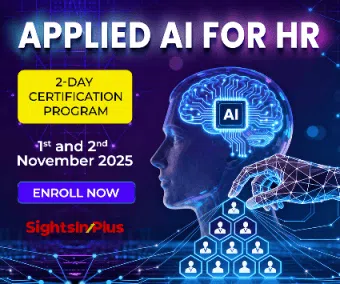Most established organizations have succession slates – nicely laid out documents with clearly marked out successors, not just “Ready now” but also showing a pipeline for the next 3-5 years. These plans can be detailed with some even hosted on the HRMS.
But when positions fall vacant, are these slates really referred to? Apart from HR, does an organisation even ask for a succession slate again to close the vacancies? Even when movements happen according to the slate, are they happening because of the succession slate or just on their own and later show up in fancy HR metrics of “Succession Hit Ratios”? How many leaders can we claim have been homegrown as a direct result of the succession exercise?
In the VUCA world when the entire organisation structure keeps changing every 12-18 months, does that position on your succession slate prepared 6 months back even exist?
Moreover, with employee attrition projected at an average of 19% across industries, the average employee tenure has come down from 30-35 months to just 12-18 months. Where’s the time to groom people for future roles?
In Short – Is Succession Planning Dead?
Understanding why employees are quitting provides valuable insights. According to a recent McKinsey study which covered 12000 respondents across countries including India, 41% said that “lack of opportunity for upward mobility” was the number 1 reason why they left. Especially the younger generation is looking for jobs that offer career advancement – 40% of GenZ will accept a 5% pay-cut for a role that offers better career growth, compared to 26% of the overall workers.
Thus, succession planning is not only still relevant but could be one of key levers for companies to retain Hi-Potential employees in the long run. But for succession to go beyond just being an academic exercise, HR teams must reinvent it, and avoid the classic pitfalls listed below.
Succession for Positions vs Talent Pools
When the business environment is so dynamic, succession planning for specific roles is likely to fail. This is why no one goes back to the succession slate – because the context has changed and many of those positions don’t even exist anymore. Hence, except for very senior roles (CEO and key CXOs), talent pools for a group of roles/competencies deliver better ROI.
Talent pools allow the flexibility to identify and groom talent for a bunch of related skills & domains.
Thus, the talent can take up whatever role comes up first or is the most preferred. This not only makes the exercise more relevant and flexible to the changing needs of the business, but also has a better chance of retaining HiPos.
Succession Slate is Not the End Goal
Mapping successors is not and cannot be the end goal, it’s the start of a long process to develop successors and facilitate movements into target roles. Keeping that focus right from the beginning means that HR drives the discussion to not just identify successors, but also clearly map out development needs of the candidates and agree on clear actions.
It’s All About Experiences
I’ve often felt that the way HR lays out the “leadership development” journeys makes it look like all the elements – MDP, Self-Reflection, Coaching/Mentoring and Experiences (Shadowing, Deputation, ALPs, etc.) are equally important. Trust me, they are not.
One can’t learn swimming by reading a book. So, while MDP programs help provide perspectives, they cannot be the center piece of your program. Real development happens when people get the business and leadership experiences that are lacking and keeping them away from the target role(s).
And for these experiences to happen, leaders must own the program. They can’t just put the accountability on HR and ask them for a quarterly update on succession development actions. They must invest their time in providing the HiPos with experiences. HR plays the role of a facilitator, providing structure and holding everyone accountable for commitments, but the action is all at the leadership level.
Conclusion
Why do all this when chances of success are low, and you aren’t even aiming at specific positions? What’s the point when you aren’t even filling up specific positions?
Internal candidates understand the organization better and have been tried and tested, even if not, in the exact role you are recruiting for. Thus, positions cannot just get filled faster, but chances of success in the role may actually be higher. All this contributes to better productivity and superior business outcomes.
Aiming broader is the key. Even if 1 in 10 of your talent pool candidates takes up a role and ends up staying longer, consider that a success. Measure broader outcomes like internal fill rate rather than succession hit ratios.
So, leaders, next time your succession plan fails, you know where to put the blame.



